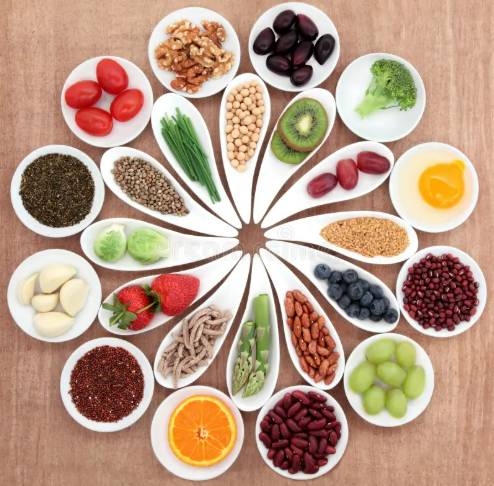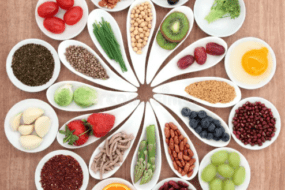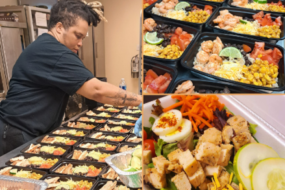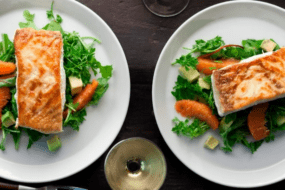
Introduction
In today’s fast-paced world, food plays a vital role not only in sustaining life but also in bringing joy and pleasure. The challenge many people face is striking a balance between indulgence and nutrition. How do we enjoy our favorite comfort foods without compromising our health? Is it possible to maintain a nutritious diet while still indulging in delicious treats? The answer is yes, and it lies in finding harmony in your eating habits. This article explores practical strategies for balancing indulgence and nutrition, ensuring a sustainable and enjoyable approach to eating.
Understanding Nutrition and Indulgence
Before finding balance, it is essential to define what nutrition and indulgence mean in the context of a healthy diet.
- Nutrition refers to consuming foods that provide essential vitamins, minerals, proteins, healthy fats, and carbohydrates necessary for overall well-being. A nutritious diet supports physical health, cognitive function, and emotional stability.
- Indulgence involves enjoying foods that may not be as nutrient-dense but bring satisfaction, comfort, or pleasure. These foods often include sweets, fried items, and processed snacks.
The key to balancing these two aspects is moderation. Rather than eliminating indulgent foods, integrating them mindfully into a well-rounded diet fosters sustainability and enjoyment.
The 80/20 Rule: A Sustainable Approach
One of the most effective strategies for balancing nutrition and indulgence is the 80/20 rule. This principle suggests that 80% of your diet should consist of nutrient-rich whole foods, while 20% can be reserved for indulgent treats.
- 80% Nutritious Choices: Focus on whole grains, lean proteins, fresh fruits, vegetables, nuts, and healthy fats. These foods provide the necessary nutrients to maintain optimal health.
- 20% Indulgent Choices: Allow yourself to enjoy your favorite treats in moderation. Whether it’s a slice of cake, a bowl of ice cream, or a plate of fries, savoring these foods occasionally prevents deprivation and binge-eating tendencies.
By following this rule, you can maintain a healthy lifestyle without feeling restricted, making long-term adherence easier.
Mindful Eating: The Art of Enjoying Food
Mindful eating is a powerful practice that helps bridge the gap between indulgence and nutrition. It involves being present while eating, appreciating the flavors, and listening to your body’s hunger and fullness cues.
Tips for Mindful Eating:
- Eat Without Distractions: Avoid watching TV or scrolling through your phone while eating. This helps you focus on the experience and prevents overeating.
- Savor Each Bite: Take the time to enjoy the textures and flavors of your food. Chew slowly and appreciate the experience.
- Recognize True Hunger: Learn to differentiate between physical hunger and emotional cravings. This prevents unnecessary indulgence.
- Portion Control: Instead of eating directly from a bag or large plate, serve a reasonable portion to avoid overeating.
Practicing mindful eating allows you to enjoy indulgent foods in moderation without guilt while appreciating the nourishment from healthier meals.
Healthier Alternatives to Favorite Indulgent Foods
Another way to balance indulgence and nutrition is by opting for healthier versions of your favorite comfort foods. Simple ingredient swaps can make a significant difference in nutritional value without sacrificing taste.
Examples of Healthier Alternatives:
- Ice Cream → Greek Yogurt with Honey and Berries: This alternative is rich in protein and probiotics while still satisfying a sweet tooth.
- French Fries → Baked Sweet Potato Fries: Sweet potatoes offer more fiber and nutrients than regular fries, making them a healthier option.
- Soda → Sparkling Water with Citrus: Replacing sugary sodas with naturally flavored sparkling water reduces sugar intake while still providing a refreshing taste.
- Milk Chocolate → Dark Chocolate (70% or Higher Cocoa): Dark chocolate contains antioxidants and less sugar compared to milk chocolate.
- White Bread → Whole Grain or Sourdough Bread: Whole grains provide more fiber and nutrients, making them a better option for digestion and energy levels.
Small substitutions like these contribute to a healthier diet while maintaining the pleasure of indulging in favorite foods.
Meal Planning: Structure Without Restriction
Meal planning is a valuable tool in achieving a balance between indulgence and nutrition. Planning meals in advance helps ensure that most of your diet consists of nourishing foods while still making room for occasional treats.
Steps to Effective Meal Planning:
- Plan a Balanced Menu: Incorporate proteins, vegetables, healthy fats, and whole grains into your meals.
- Prepare Indulgences Mindfully: Instead of indulging impulsively, plan when and how you will enjoy treats.
- Batch Cook Healthy Meals: Having nutritious meals ready reduces the temptation to rely on processed or unhealthy foods.
- Stay Flexible: If an unplanned indulgence occurs, balance it with healthier choices throughout the day.
Meal planning creates structure without feeling restrictive, allowing for both nourishment and enjoyment.
The Role of Exercise in Maintaining Balance
Physical activity is another essential aspect of balancing indulgence and nutrition. Regular exercise helps regulate metabolism, maintain a healthy weight, and improve overall well-being. Additionally, engaging in movement allows for greater flexibility in dietary choices.
Ways to Incorporate Exercise:
- Daily Walks: A simple walk after meals aids digestion and balances energy levels.
- Strength Training: Building muscle improves metabolism and overall fitness.
- Yoga or Meditation: These practices support mindful eating and stress management.
- Fun Activities: Dancing, hiking, or playing sports make staying active enjoyable.
Exercise doesn’t have to be rigorous; even moderate movement contributes to a healthy lifestyle while accommodating occasional indulgences.
Embracing a Positive Relationship with Food
A crucial component of balancing indulgence and nutrition is cultivating a positive mindset about food. Avoiding guilt, restrictive dieting, or labeling foods as “good” or “bad” helps create a sustainable and enjoyable approach to eating.
Tips for a Positive Relationship with Food:
- Practice Self-Compassion: Allow yourself to enjoy indulgences without guilt. One treat won’t ruin progress.
- Avoid Restrictive Diets: Extreme dieting leads to cravings and binge-eating cycles. A balanced diet is more sustainable.
- Focus on Nourishment: Instead of obsessing over calories, think about how food fuels your body.
- Celebrate Food’s Role in Culture and Social Life: Enjoy meals with loved ones and appreciate food’s role beyond just nutrition.
By shifting perspectives, you can embrace food as both nourishment and enjoyment, making balance easier to achieve.
Conclusion
Finding harmony between indulgence and nutrition is not about strict dieting or deprivation. Instead, it’s about creating a lifestyle that integrates healthy eating with enjoyable treats in a mindful and balanced way. By following the 80/20 rule, practicing mindful eating, opting for healthier alternatives, planning meals, staying active, and cultivating a positive relationship with food, you can achieve sustainable well-being while still savoring life’s culinary pleasures. Remember, balance is the key to long-term success—enjoy your meals, nourish your body, and indulge without guilt.






















